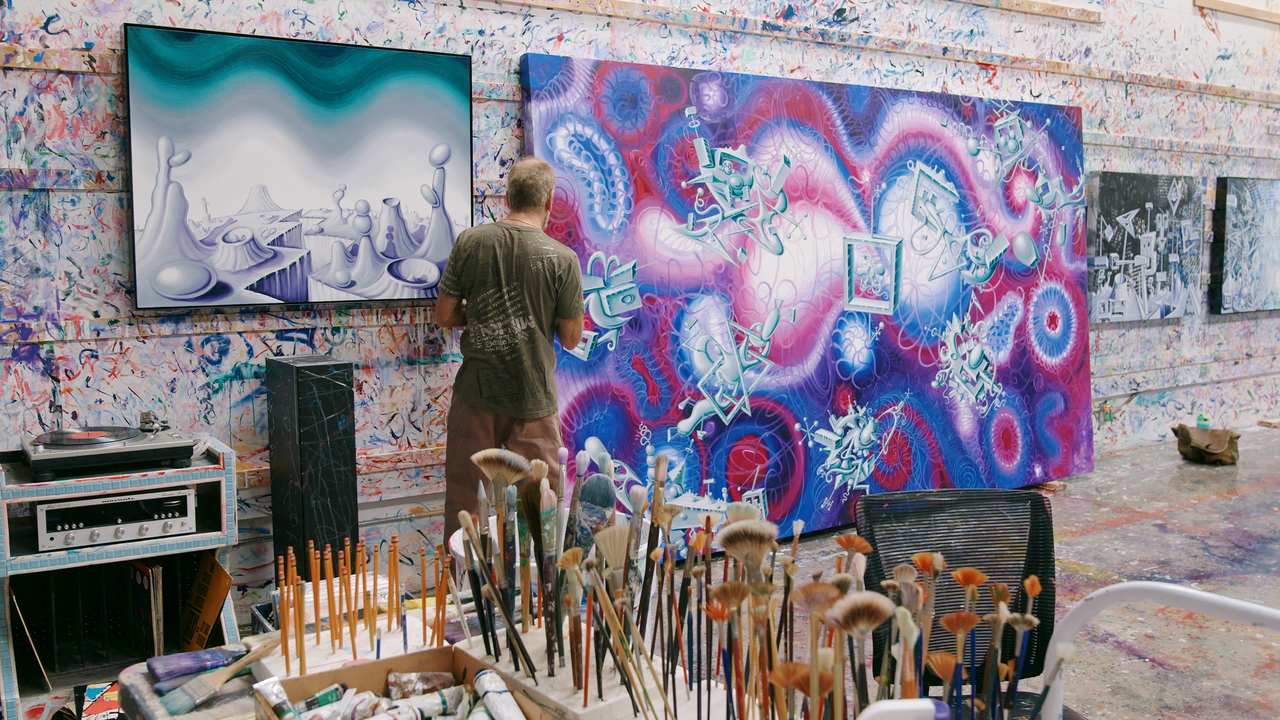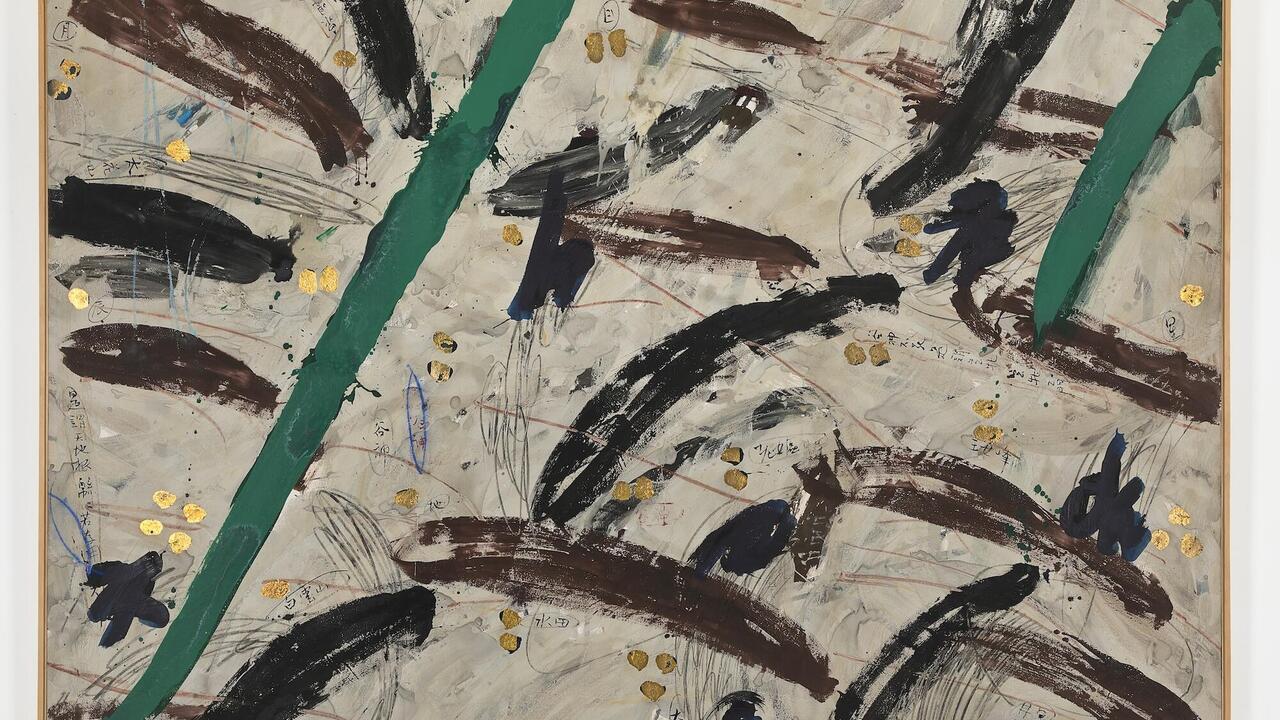Moshe Gershuni
Neue Nationalgalerie
Neue Nationalgalerie

13 September 2014 – 31 December 2014
The entrance to No Father No Mother, an exhibition by Israeli artist Moshe Gershuni at the Neue Nationalgalerie, is flanked by red Hebrew script reading: ‘Who’s Zionist and who isn’t.’ The gloves are off here – the eponymous text work from 1978 makes that clear – in confronting the complex themes entailed by the loaded triangle of Germany/Israel/Zionism. Yet the omission of a question mark in the phrase incapacitates its supposed binary opposition, prompting instead an internal interrogation, one that effectively frames the central motifs in Gershuni’s oeuvre. First shown in Tel Aviv in 1979, this text work also provides a chronological demarcation: the exhibition focuses on works produced after 1980, a turning point in Gershuni’s career as well as personal life.

Gershuni’s nomination to represent Israel in the 1980 Venice Biennale invoked a complete transformation in his work. Tasked to serve as an intermediary between Europe and Israel, he started incorporating themes of ‘Jewishness’ and trauma into his paintings, breaking taboos of Israeli art at the time. Previously, Gershuni’s conceptualist works pertained to Israel’s Arte Povera movement, favouring the Spartan and austere, as these qualities reflected – as was the ethos then – the conditions of a young country built on ideology and labour, with a visual tradition eschewing iconography and a tendency to use at-hand materials.

Spread across three rooms, the show – the first one dedicated to an Israeli artist at the Neue Nationalgalerie, and Gershuni’s first European show for 30 years – balances moments of eruptive pathos and solemn contemplation. Paintings and works on paper are hung in sequence throughout, while works from the series Jewish Ceramics (1988) set on a long, rectangular platform occupy the centre of the gallery. The colour red dominates Gershuni’s work, along with black or yellow stars, crescent moons and swastikas. He paints on all fours, crouching over the paper with his entire body whereby head and ass, as he put it in a filmed interview prior to the opening, are equally important to the process. His mixed media canvases are laden with traces of his movement, thick layers of paint, emblems and liturgies inscribed in Hebrew letters.

At the heart of his paintings are amorphous stains; hand-written phrases are their iconographic counterparts, functioning as directive anchors for the viewers. They link the corporeal and abject with the conceptual in Gershuni’s work. Paintings from the series Hai Cyclamen (1983 – 85) feature bent, undulating flowers that form elliptical loops, flames and infinity symbols, as well as incomplete verses taken from death rituals or passages conveying God’s mercy. The Binding of Isaac, perhaps the most powerful motif in Jewish-Israeli representational language, transmutes onto the canvas into the Yiddish, Eastern European pronunciation of ‘Isaac’. Works from his The Soldiers series (1981) similarly references filicide, though here the sons are no longer defenceless. The paintings’ blood reds also seem to question Israeli occupation almost 15 years after the Six Day War. At the same time, the soldiers, conjured in the paintings by language alone, also become objects of homoerotic desire: inscribing the red stained works with a discursive ‘Shalom Soldier, How Are You?’ or ‘Good Soldier’, Gershuni, who came out in 1980, shows himself as a flirtatious provocateur.

Three works from 1998 feature the titular ‘No Father No Mother’, an allusion to Georg Büchner’s famous play about the soldier Woyzeck (1879). Gershuni’s search for identity as a Jewish and an Israeli artist has resulted in an orphan state: he broke away from the post-minimalism of his peers, yet as a painter belonging to a non-iconographic tradition, his tools became stain and written word. ‘I’m an Israeli because I am Jewish,’ Gershuni wrote in 1982, in the context of secular Israeli cultural debates over themes of Jewishness, offering one answer to the show’s opening challenge. Yet his Zionism is far more nuanced than the definition the term assumes in light of recent political developments. In 2003, Gershuni rejected the ‘Israel Prize’, the state’s highest honour, because he refused to shake hands with then Prime Minister Ariel Sharon, as he would have had to at the ceremony. No Father No Mother, planned months in advance, opened after a summer of bloodshed in the region. Through Gershuni’s depictions of multiple complexities, this show in Berlin, in the autumn of 2014, is a reminder that the conflict can’t be reflected in simplistic binaries.
















